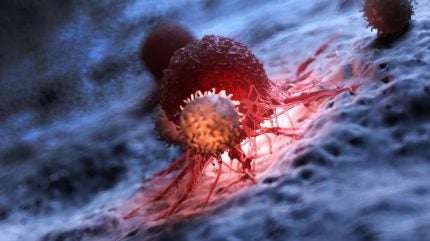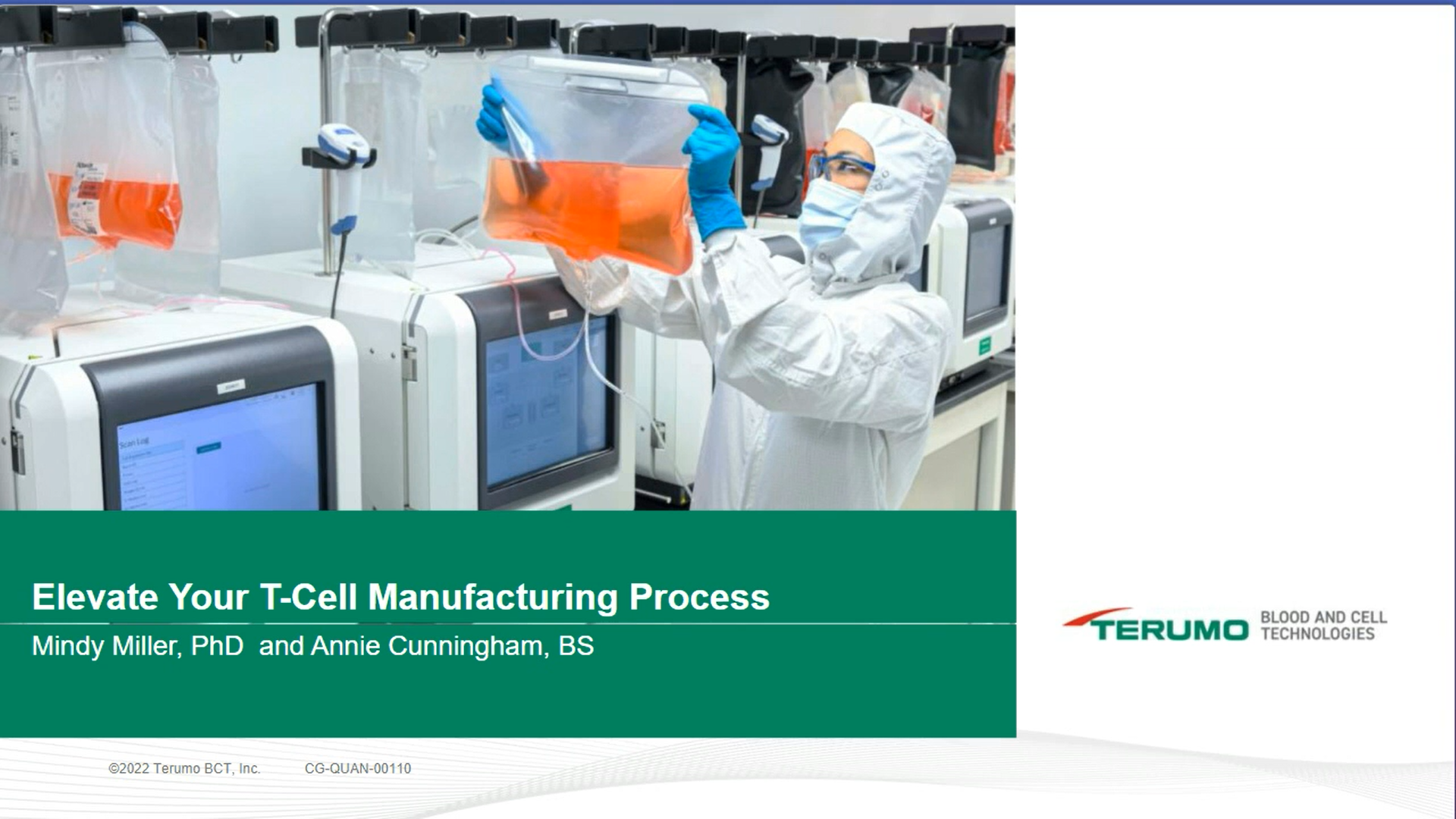
The progress of advanced therapeutics in recent years, especially in oncology, have been so promising many are starting to use the term “cure” when talking about some types of cancer. Despite complex manufacturing processes, multiple cell and gene therapies are providing front-line treatment options, with others continuing to move closer to front-line.
In many cases, producing a cell therapy involves modifying primary immune cells to recognize, seek out, and attack specific cancer cells, which can co-opt immunosuppressive mechanisms to evade the body’s immune defenses.
As scientific understanding develops in parallel with technological advances, the next generation of cell and gene therapies addressing a wide array of conditions and diseases are expected to be developed and commercially approved. Oncology is the dominant therapy area, which is widely expected to continue in the years ahead. Within the next decade, treatment options are also understood to be possible for central nervous system conditions and immunology patients.
How cell therapy developed
Recent breakthroughs in cell and gene therapy build on research knowledge and expertise that span decades. The first chimeric antigen receptor (CAR) T-cell therapies were tested for oncology in the late 1990s and early 2000s. These early CAR-T cell therapies did not show the proper durability for eliminating cancer, so considerable efforts were focused on increasing that durability. The turning point came in 2012, when several manuscripts were published describing the first CAR-T patients who were in remission because of the therapy. This was followed by what is now seen as a pivotal moment in the field: the treatment of the first pediatric patient, Emily Whitehead.
After the 2012 milestones, the intensity of cell therapy development increased and culminated in a pivotal year, 2017, when the U.S. Food and Drug Administration (FDA) approved the first CAR-T therapy, Kymriah. Later in 2017, the European Medicines Agency (EMA) approved its first CAR-T therapy, Yescarta. Between 2017 and the end of 2022, a total of six therapy products were approved by the FDA.1
The growth of commercial cell therapies continues. In 2023 alone, there were eight U.S. cell therapy commercial approvals by FDA. Depending on progress in 2024, the U.S. may see more than ten products approved.
The advanced therapy preclinical and clinical pipeline also continues to show promising growth. There are approximately 1,800 active clinical trials worldwide, with 60% having at least one clinical site in the U.S.2 This seems to suggest the field will continue to see commercial approvals. In cell therapy, multiple products address blood cancers, including multiple myeloma, leukemias, and lymphomas. The field hit another crucial milestone in February 2024 when the FDA approved the first tumor-infiltrating lymphocyte (TIL) therapy for solid tumors.2
This first-line TIL therapy has been designed to treat melanoma. As with CAR T-cell therapies, Iovance Biotherapeutics’ Amtagvi involves taking cells from the patient’s body and enhancing them externally before re-administering them to the patient, where they then attack tumor cells.
“We’ve already proven that CAR-T works in leukemia and lymphoma, now we’re starting to prove that new technologies harnessing neoantigens, TIL, CAR-T, and others can now be applied to the next therapeutic hurdle of solid tumors,” explains Dr. Phil Vanek, chief technology officer at Gamma Biosciences.
Addressing the supply gap in cell therapies
There remains a supply and demand imbalance in the advanced therapies space, specifically in cell therapies that target cancer. A survey of 17 clinical centers in the U.S. led by Dr. Yin Lin at the Mayo Clinic in Minnesota, the median waiting time for patients to receive a commercial CAR-T therapy was six months.
Survey results revealed in 2022 that only 25% of patients received the commercial CAR-T therapy for which they qualified, and another 25% of patients joined a different CAR-T clinical trial because of their inability to access their preferred commercial CAR-T therapy.3 The remaining 50% of patients either entered an alternative type of clinical trial or moved into a hospice and died.3
Commercial cell therapy costs run into the hundreds of thousands of dollars, and this presents a potential barrier to adequate patient access. Matthew Hewitt, CTO for CGT and Biologics at Charles River Laboratories (CRL), emphasizes the need to prioritize
identification and commercialization of promising new therapies. It’s important for these therapeutic developers to work with partners and help them think through important considerations about manufacturing, costs, and regulatory approval.
“While everyone agrees we need to address costs, first we need commercial therapies — then we can continue to work on improving them from a cost perspective,” he says. “If you look at history, the pharma space has a pretty good track record of innovating our way out of problems.”
“There are a lot of technologies in development and coming to the market which can help bridge that gap,” adds Hewitt.
How technologies for cell and gene therapy manufacturing are advancing
Development timelines for cell therapies have shortened notably in recent years. In previous generations, it was common to have timelines of ten to 12 years for a biologic product to progress from discovery to clinical trials and commercial authorization. But timeframes for CAR-T therapies are substantially shorter.
“The first CAR-T was approved in just a few short years from the first therapeutic trials, all the way through commercialization. That shortened our cycle time for development and we’re still working to improve it,” says Vanek.
Despite the pharma industry’s historic reputation for being slow-moving, Vanek explains that the rapid pace of development of CAR-T therapies forced the industry to adapt processes and manufacturing technologies. One of the biggest challenges was production being heavily reliant on tools and technologies built for the bioprocessing industry.
“The industry was building the plane while we were flying it. We were scrambling to keep up. But that was a good thing,” adds Vanek. “Clinical success must be at the heart of everything. We can anticipate what might be successful. But when you see a binary clinical success, like a CAR-T therapy, where people go into remission and remain that way, that was a real wake-up call to say: ‘This therapeutic modality is real, it’s here, it’s now. We must adapt how we make these things to make them widely available’.”
New equipment and technologies for cell and gene therapy
To meet demands for pace and scale, life sciences and tech companies have built equipment and analytical technologies that combine manufacturing and analysis to drive greater efficiencies in development and production. As a direct result, the industry has learned how to consistently make many different types of cell and gene therapies.
“We’ve taken out a lot of the variability in manufacturing to make these therapies much more robustly and reproducibly,” says Vanek. “We’ve also reduced a lot of the therapeutic and regulatory risk by removing animal component materials and adding well-characterized raw materials. We’ve worked out the supply chain in terms of receipt of materials, freezing cells and thawing, and keeping cells throughout the manufacturing workflow both viable and healthy.
“In terms of tracking cells for autologous patients, we’re using a much more significant chain of custody and chain of identity capability to strengthen the entire supply chain of cell and gene therapy manufacturing.
“As we reduce the cost of manufacturing, there will be pressure in the industry to make these therapies more affordable and more widely available.”
The future possibilities for cell and gene therapy
There is much optimism within the industry about the future, with thousands more cell and gene therapies undergoing clinical trials. Despite many remaining challenges, the industry clearly wants to develop the necessary solutions.
“We know autologous works,” explains Hewitt. “So, we should also be pushing forward better autologous development of therapeutics, as well as better equipment to allow us to manufacture these therapies in a larger scale more cheaply without compromising safety and quality.”
Built on an understanding of oncology, cell and gene therapies could one day provide effective treatments for a range of infectious diseases and conditions such as diabetes, as well as improve the health of neurological patients. There is also much excitement surrounding therapies in the autoimmune space, as well as the ongoing discoveries of new cell types that create further opportunities.
“Looking at the autoimmune space, we’re seeing some really good data there,” adds Hewitt. “IPSCs (induced pluripotent stem cells) should also be in the conversation. These are cells with the ability to become any cell type with the right stimuli. They have applications both within and outside of oncology, and more going into regenerative medicine.”
“Also, on the allogeneic side, most programs are using donors to supply their starting material. Campaigns to find good donors can be very expensive and time-consuming. By moving over to an IPSC cell bank, you could eliminate that and, in principle, have an evergreen supply of starting material.”
Regulatory approval pathways could also be streamlined, with the innermost components of an established therapy fine-tuned to meet the needs of specific patients. “All these regulatory and manufacturing concepts start to evolve into almost “push-button” therapeutic manufacturing production methods, producing customized products for end users,” adds Vanek. “I think that’s doable in our lifetime.”
The role of AI in the future cell and gene therapy market
The more therapy products that undergo clinical trials and enter the market, the more data will be available to refine treatments and advance therapies further.
“This convergence of readily available biological data and our ability to mine big datasets really unlock a lot of potential and value,” says Vanek.
Due to the increases in data, uses of artificial intelligence (AI) are widely predicted to increase. Notably, Charles River has been testing out AI in certain processes, having developed a platform called Logica in partnership with Valo Health for drug discovery and design, with several licensing deals announced. The Logica platform has primarily been used for small-molecule development, with other uses across the business being considered.
“For preclinical development, and even in a use case like pathology, this could be very useful to help lead developments more efficiently. We have a goal at Charles River to cut up to 12 months off the overall therapeutic development timeline. That wouldn’t be in one particular area, it would be across the different parts of therapeutic development, making it more efficient,” says Hewitt. “There are a lot of use cases we can apply AI to in process and analytical development to ensure that we’re applying robust standards that give us the best, most stable product process and analytical suite.”
The combination of enhanced scientific understanding, growing volumes of data, and advances in manufacturing technologies are all pointing to a future market where the full potential of cell and gene therapy is unlocked across an extensive range of medical treatments for greater numbers of patients.
References:
1. Chen YJ, Abila B, Mostafa Kamel Y. CAR-T: What is next? Cancers (Basel). 2023;15(3):663. doi: 10.3390/cancers15030663.
2. GlobalData. lovance’s Amtagvi for melanoma treatment grains FDA approval. PharmaceuticalTechnology.com. 19 February 2024. https://www.pharmaceutical-technology.com/news/iovance-amtagvi-melanoma-fda/?cf-view
3. Nelson R. Patients waiting months for “Last Chance” CAR T-Cell Therapy” Medscape.com. 14 July 2022. https://www.medscape.com/viewarticle/977179?form=fpf#vp_1:~:text=The%20team%20contacted,hospice%2C%20or%20died.
AMTAGVI and Iovance are either registered trademarks or trademarks of Iovance Biotherapeutics, Inc. in the United States and/or other countries.
Kymriah is either a registered trademark or a trademark of Novartis in the United States and/or other countries.
Yescarta is either a registered trademark or a trademark of Kite Pharma, inc. in the United States and/or other countries. Logica and Charles River are either registered trademarks or trademarks of Charles River Laboratories, Inc. in the U.S. and/or other countries.
Valo Health is either a registered trademark or a trademark of Valo Health, LLC in the U.S. and/or other countries.



